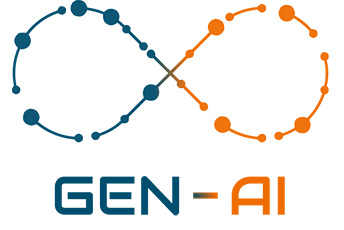Healthcare (Hospitals, Clinics, Insurance, and Telemedicine)
Scenario:
In the healthcare sector, a large amount of medical information is managed in image format, such as scanned medical records, radiology reports (CT scans, MRIs), and prescriptions. These documents often need to be manually reviewed by doctors and administrative staff to extract key data. A multimodal chatbot combined with a semantic extractor based on OCR + Computer Vision + LLM can automate this process, improving efficiency, accuracy, and response time in clinical and administrative decision-making.
How Integration Works in the Healthcare Sector
- Multimodal Interaction with the Chatbot:
– Healthcare professionals interact with the chatbot using various formats:
– Text: Typing queries or descriptions of the images to be analyzed.
– Images: Uploading scanned medical records, radiology reports, or prescriptions.
– Audio: Recordings of medical dictations or verbal reports.
- Processing Medical Images:
– OCR: The multimodal chatbot uses OCR to convert images of medical records, prescriptions, or medical reports into structured text, ensuring that all relevant information can be digitized and processed.
– Computer Vision: The Computer Vision layer analyzes the visual structure of medical images, such as scans of reports or X-rays. It automatically identifies areas of interest, such as physician notes, diagnostic sections, and results.
– LLM (Large Language Model): Once the information is extracted and organized, the LLM interprets the medical content, ensuring it can be analyzed in its clinical context. This may include extracting diagnoses, recommended treatments, or test results.
- Analysis of Complex Images:
– In the case of more complex images such as CT scans, MRIs, or radiology reports, the multimodal chatbot applies advanced computer vision techniques to identify relevant anatomical regions, lesions, or abnormalities.
– The LLM can interpret the results of the medical report associated with the images and provide summaries of diagnoses or treatment suggestions.
- Multimodal Real-Time Response:
– Text: The chatbot returns a summary or analysis of the extracted medical content, whether it’s the text of a prescription or the diagnosis in a radiology report.
– Images: For medical images like CT scans, the chatbot can offer visual markings of areas of interest (lesions, abnormalities) directly on the image.
– Audio: Physicians can also receive responses in audio format, allowing for greater accessibility and efficiency in clinical work.
Advantages of Integration in the Healthcare Sector
- Automation of Medical Information:
– The system automates the extraction of critical data from images and medical documents, eliminating the need for doctors or administrative staff to manually review each document.
– Complex information can be processed efficiently, improving workflow within hospitals and clinics.
- Greater Accuracy and Reduction of Errors:
– The combination of OCR, Computer Vision, and LLM ensures accurate extraction of medical information, reducing the likelihood of errors in interpreting diagnoses, prescriptions, or test results.
– Semantic analysis allows for better interpretation of medical terms, ensuring that important details are not overlooked.
- Optimization of Medical Care:
– With the automation of data extraction and real-time analysis capabilities, doctors can more quickly access key information, allowing for more informed clinical decisions.
– It improves response times in medical emergencies, as the chatbot can provide relevant information in seconds.
- Facilitates Remote Work and Telemedicine:
– In a telemedicine environment, doctors can interact with the multimodal chatbot to analyze prescriptions or medical reports sent by patients. This allows for accurate clinical assessments without the need for in-person visits.
– Patients can submit images of prescriptions or reports, which the chatbot processes to extract the necessary information for the consultation.
- Access to Faster and More Efficient Diagnoses:
– By utilizing computer vision on complex images like CT scans or MRIs, the system can automatically identify anomalies and provide a preliminary analysis for the physician, who only needs to validate or refine the diagnosis.
– This reduces wait times for diagnoses in high-demand environments, such as hospitals or imaging centers.
- Scalability for Large Healthcare Institutions:
– The solution is scalable and can be used in both small medical centers and large hospitals, processing hundreds or thousands of medical documents and images in parallel.
- Improvement in Relationships with Insurers:
– The multimodal chatbot can also facilitate interactions between clinics and insurance companies by automatically extracting the necessary information from medical reports or prescriptions to process claims and approvals.
Example Workflow in a Multimodal Chatbot for Healthcare
– Case 1: A doctor uploads a scanned image of a radiology report.
– Chatbot: “What information do you want to extract from the report?”
– Doctor: “Extract the CT results and diagnosis.”
– Chatbot Response: “The CT report shows a lesion in the right lobe; the diagnosis is likely a tumor…”
– Case 2: The doctor receives an audio file with a medical dictation.
– Chatbot: “Transcribing and analyzing the dictation…”
– Chatbot Response: “The dictation indicates that the patient has advanced chronic kidney failure…”
– Case 3: A patient sends an image of a prescription.
– Chatbot: “Analyzing the medical prescription…”
– Chatbot Response: “The prescription includes the following medications: Amoxicillin 500mg, Ibuprofen 600mg…”
This integration in the healthcare sector optimizes the analysis and processing of medical information in various formats (images, text, and audio), improving clinical efficiency and facilitating interactions between doctors, patients, and insurers.


